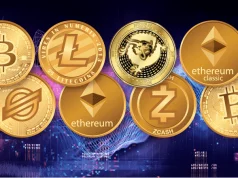One of the most appealing aspects of cryptocurrency has consistently been the absence of a centralized administration to control its circulation. On the other hand, more complex decentralized applications became popular when Ethereum came along. Before that, only a few people utilized them.
The development of such innovative applications makes it possible to construct a decentralized monetary system (DeFi).
Describe DeFi.
People can carry out conventional monetary transactions on the Defi development services platform independently of any third party or governmental body’s intervention. Through the use of a blockchain application known as the DeFi protocol, rather than relying on an impartial third party, DeFi links clients with one another directly. These agreements are guaranteed to be upheld thanks to the company’s products and their use of smart contracts. It is possible to build DeFi apps with other blockchains; however, by 2021, Ethereum will emerge as the most well-known and commonly utilized blockchain.
The number of persons who utilized DeFi significantly grew throughout 2020 and 2021. According to Defi Pulse, the total value of what was locked increased from approximately $697 million at the beginning of 2020 to more than $85 billion in August 2021.
What exactly is an smart contract?
With the assistance of smart contracts, users can construct DeFi applications on top of the blockchain. Transactional protocols or computer programs known as “smart contracts” are designed to execute automatically whenever significant events relevant to the contract occur. Ethereum and DeFi are related because they were both developed to use smart contracts.
Why is the importance of DeFi so great?
How we use different forms of currency would be significantly altered if we abandoned conventional banking in favor of decentralized finance (DeFi).
Your finances are likely to include dozens, if not hundreds, of other people. Financial institutions are tasked with ensuring the security of fiat currency. When sending digital money to loved ones, we employ the services of conventional financial institutions and exchanges. Because adopting these methods may result in the incurring of transaction fees, doing so may require an investment of both time and money.
Most people believe flaws and difficulties are essential; nevertheless, DeFi does not have them.
What distinguishes decentralized finance (DeFi) from other forms of finance?
Traditional finance is governed by a plethora of rules and frequently incurs substantial fees as a result. Even though conventional finance is simpler for us to comprehend, Defi development services provides the following:
It is not necessary to acquire any permits or required waiting for time or permission to engage in business dealings or transactions.
more transparency about business dealings and costs
a greater degree of faith placed in the technology itself rather than in intermediaries such as banks
However, there is the possibility that these advantages will come with associated hazards. DeFi is a territory that has yet to be explored, and it is less private than other cryptocurrencies because transactions may be viewed on the decentralized, public blockchain.
What exactly do individuals accomplish with DeFi?
Decentralized finance is being put to use for a wide variety of various financial purposes currently, and that number will only grow in the years to come. The quality of the smart contract is the only thing that restricts what DeFi may accomplish.
Even prediction markets, in which participants wager on the outcomes of events such as sporting contests and elections, are occasionally structured with contracts. One variety of prediction markets is known as a poly market.
The following are some of the most important apps and DeFi services that are used in today’s world:
- Coins
- Stablecoins
- Tokens
- Wallets
- Mining, staking, and liquidity
- Trading
Three activities may be done with the money: saving, borrowing, and lending.
When new blockchains are developed that may be used by the Defi development services , the company will frequently create its currency to entice users to join the network.
The following are the most popular types of coins:
Ether, abbreviated as ETH, is the cryptocurrency used on the Ethereum network (ETH)
- Cardano (ADA)
- Solana (SOL)
- Polkadot (DOT)
Stablecoins
Most cryptocurrencies carry a high level of risk due to the volatile nature of their pricing. This phenomenon is known as volatility.
Within the DeFi ecosystem, stablecoins have emerged as the most popular method for combating the effects of price fluctuation. Their value is derived from some underlying asset, such as fiat money or another commodity exchanged on an exchange. As a result, its value is less prone to extreme swings, and it is highly improbable to drop to a level lower than the underlying asset.
Tokens
You can buy things that have the appearance of coins and are referred to as DeFi tokens as tokens. Even though they can also be considered a form of cryptocurrency, they are developed on top of a blockchain that has already been developed.
Although Ether is Ethereum’s “native” cryptocurrency, UniSwap and Compound are developed on top of the Ethereum network. Ether is Ethereum’s “native” cryptocurrency.
They are available in a wide variety of flavors, including payment tokens, utility tokens, and governance tokens, to name a few.
Explain NFTs.
Non-fungible tokens, also known as NFTs, are specialized tokens that may be exchanged for valuable objects such as works of art, movies, and music. They are a form of synthetic asset or derivative that acquire their value from a purchase they are derived from. They do this not via a contract but rather through the tokenization of the relationship. Proof of ownership can be established through the usage of the blockchain with the use of NFTs.
They do not restrict who can see or access the primary object of the NFT; nevertheless, they prevent individuals from making copies of the NFT itself. NFTs provide artists with the opportunity to establish royalties that are triggered by the sale of their work.
Please take the time to study our guide to gain a better understanding of the potential tax impacts of NFTs.
Wallets
Because the conventional cryptocurrency exchange is centralized and depends on a third party to handle transactions, most cryptocurrency transactions are still considered examples of centralized finance. A centralized swap is one in which the cryptocurrency wallet, rather than you, maintains custody of the key to your initial digital asset.
On the other side, two instances of non-custodial decentralized exchange wallets are the Coinbase Wallet and the MetaMask Wallet. Even if you are the sole owner of the bitcoin in your wallet, you are the one who is responsible for the private keys that allow you access to it.
If you lose the keys to your DeFi wallet, you will not be able to request a fresh set of keys from the wallet’s provider as you do with centralized wallets.
Mining Using Liquid Pools
Mining for liquidity, also known as DeFi mining, is different from mining for proof-of-work, the more frequent form of cryptocurrency mining.
Other users of DeFi will be able to engage in trades between the two cryptocurrencies after you have placed any coins or tokens you own, such as ETH and DAI, in a liquidity pool. This practice is referred to as “liquidity mining.” You will receive a return on your investment and contribute to the platform’s success by assisting other users in obtaining the funds they require to finalize their deals.
Yield Farming
Yield farming is known as the process of trying to gain money by moving quickly from one pool to the next. On websites such as CoinGecko, you can examine the potential returns of a few different yield growers.
Staking
Staking allows users to participate in the consensus process in a proof-of-stake system, which is analogous to how miners contribute new blocks in a proof-of-work system. Miners add new blocks by doing computationally intensive tasks. Staking and proof-of-work are both forms of mining, although proof-of-work requires much more processing power than staking. Staking, on the other hand, distributes mining power to users in proportion to the number of bitcoin they already possess.
Trading
When users utilize DeFi trading apps, they can trade bitcoin investments without going via a central exchange. Similar to the stock market, most bitcoin trading now occurs in a single location. Centralized exchanges include the likes of Kraken, Binance, and Coinbase, amongst others.
A cryptocurrency market that handles transactions only via blockchain technology and smart contracts is a decentralized exchange. Users can do business directly with one another thanks to this feature.
Three activities may be done with the money: saving, borrowing, and lending.
Saving: Using smart contracts removes the need for a third party when borrowing and lending bitcoin. This gives you the ability to avoid many of the hazards that are associated with conventional forms of lending.
Borrowing: For instance, the lender has the right to demand repayment of the money if the borrower fails to pay back a short-term loan. As a result, in many different configurations for financing through DeFi, collateral is not required.
Lending: The functionality of a DeFi savings account is comparable to that of a conventional savings account; however, the interest rates are significantly greater. Although interest can be monitored in real-time, it is often paid out daily, weekly, or monthly, depending on the platform it is being managed on.








